As projections of his colourful drawings loomed above him on a giant screen, Sir Roger Penrose declared: ‘I like to draw pictures of things’.
It soon emerged that one of Sir Roger’s favourite subjects is the universe itself as he outlined his latest cosmological idea, a veritable chain reaction of universes, which he says has been backed by evidence of events that took place before the Big Bang of creation.
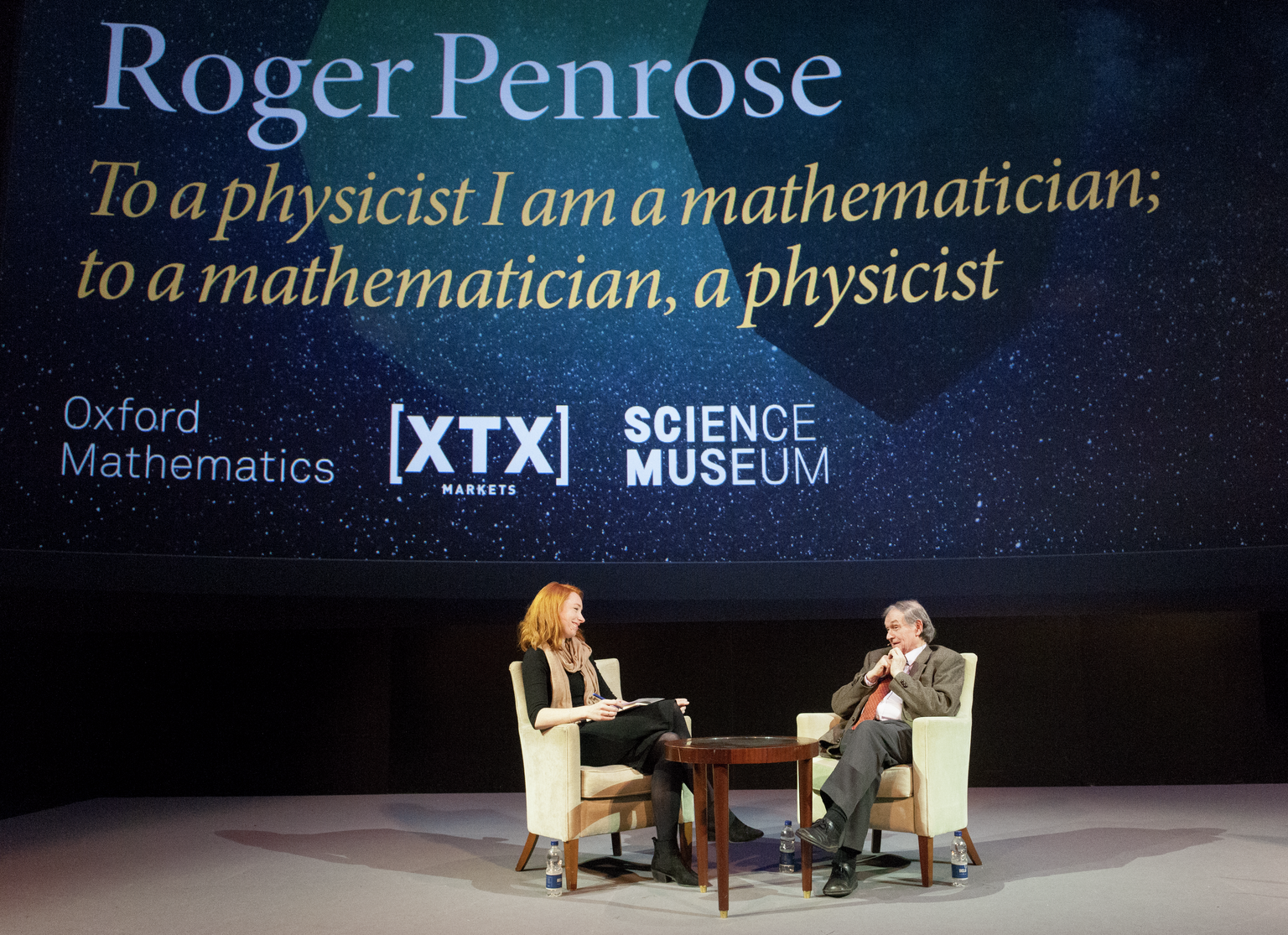
I was honoured to introduce Sir Roger, the University of Oxford Emeritus Rouse Ball Professor of Mathematics, for the second public lecture to be held in the museum by the university’s Mathematical Institute (the first was with Sir Andrew Wiles.)
Before him on Tuesday night in the IMAX sat a diverse audience, from schoolchildren to academics, including the Institute’s Mike Giles, Professor of Scientific Computing, and Martin Bridson, Whitehead Professor of Pure Mathematics, along with celebrities such as Dara O’Briain and Rachel Riley.
Over six decades, Sir Roger has visualised the unity between mathematics and the physical cosmos through his art, usually in the form of geometric drawings on transparencies for overhead projectors, and popularised his ideas with bestselling books that confound the claim of his former collaborator, Stephen Hawking, that every equation halves the popular readership.
He held the audience spellbound as he outlined his self-confessed ‘outrageous’ theory of cyclic cosmology, no less than a daisy-chain of universes, shown again on the IMAX screen as what looked like a multicoloured cosmic pipeline. ‘You get nice big pictures here’, he remarked.
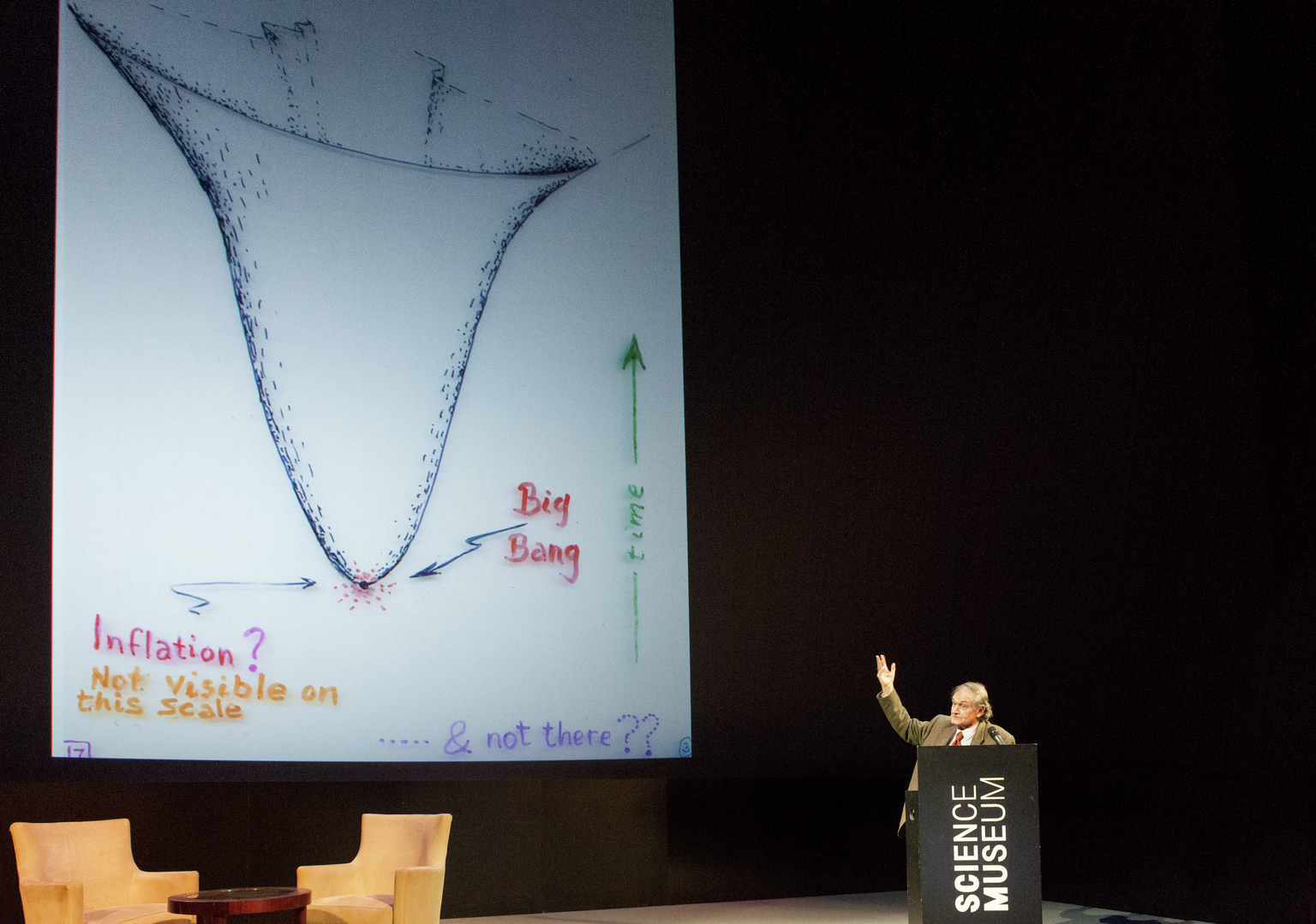
He outlined his latest efforts to develop what he calls Conformal Cyclic Cosmology (CCC) which says that, instead of a single Big Bang, the universe cycles from one aeon to the next, each time starting out infinitely small and smooth before expanding and generating clumps of matter.
That matter eventually gets dragged into supermassive black holes which over the very long term (of the order of googol, that is 10 to the power of 100, years) ‘disappear with a pop’ by emitting Hawking radiation to set the stage for the next Big Bang.
Each universe leaves subtle imprints on the next cosmos when it pops into being, he told the audience: energy can ‘burst through’ from one universe to the next, at what he calls ‘Hawking points’.
However, this theory has gone down ‘very badly’ with his peers, he said. In response, there has been deathly silence: ‘that’s what we’ve had’.
In a preprint on the arXiv server, Sir Roger with Daniel An of the SUNY Maritime College in the United States and Krzysztof Meissner at the University of Warsaw in Poland – report scouring data from the European Space Agency’s Planck satellite and say they have evidence to support their CCC idea.
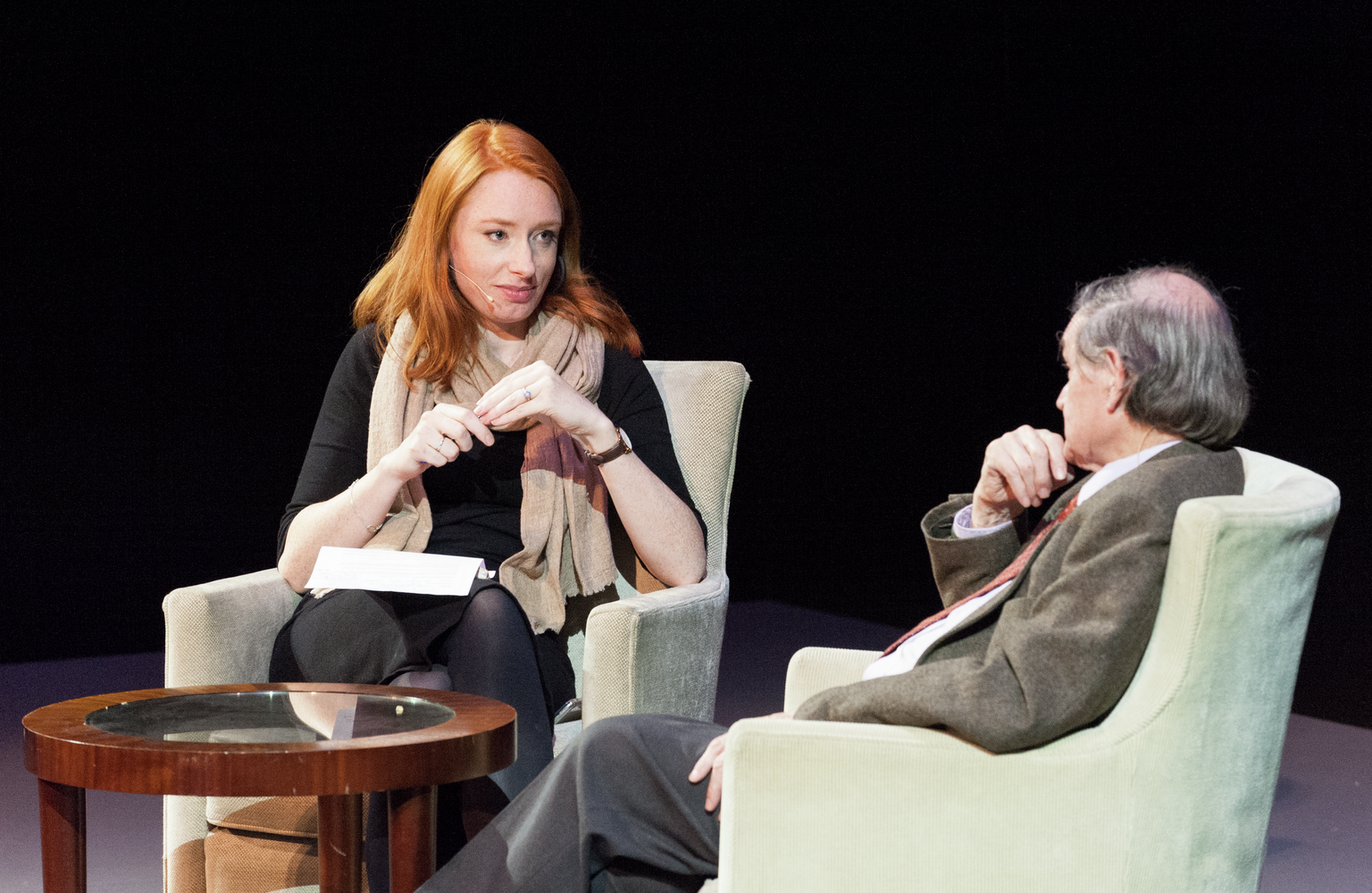
Some have questioned their data analysis but he said that a new paper will show more than 99.9 per cent confidence in their Planck results. When it comes to their critics, he said, ‘all they have to do is look’.
After his talk, Sir Roger was interviewed by museum Trustee, author of Hello World and University College London Associate Professor Hannah Fry, who asked him of his CCC theory: is it a good crazy idea or just plain crazy?
To be the former, which is what Sir Roger believes, it has to be consistent with well-established physical facts, he replied. CCC is however ‘unbelievable on the basis of current cosmology’ but he added that cosmology teems with crazy ideas, from the Big Bang to inflation, the theory of exponential expansion of space in the early universe.
She asked him about his love of challenging conventional thinking with bold ideas. Sir Roger said it is probably down to his ‘big headedness’, or perhaps being indifferent to what others think.
He told the audience that though he adores mathematics, his agenda has been driven by physics – ‘how the world works’ – and perhaps this is why he has been so influential, applying mathematical insights to some of the deepest problems of all.
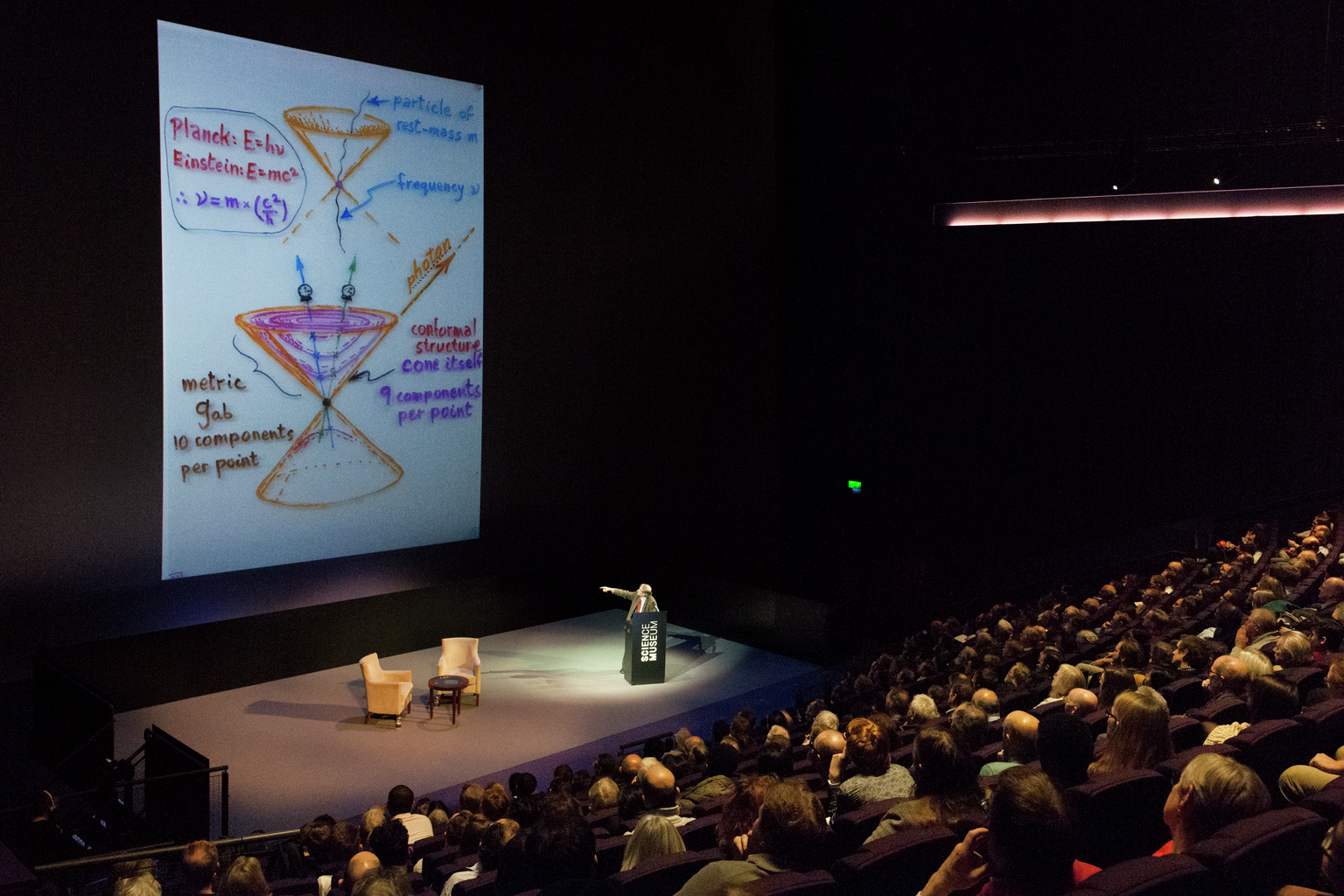
Sir Roger’s research has stretched from pioneering work on black holes with Stephen Hawking, to quantum ideas of consciousness, and to so called Penrose tiling, where absurdly simple two-dimensional symmetrical shapes, like distorted diamonds, can be used to create an infinite plane of patterns that never repeat. The latter has influenced the museum’s Pattern Pod aimed at younger children.
He is also a well-known critic of purportedly our most well-tested theory, quantum mechanics, which rules the subatomic world and, he says, is not only ‘self-inconsistent’ but also inconsistent with general relativity, our theory of gravity and the very big.
Sir Roger is not alone. Compared to him, he explained, Einstein was politer about quantum theory and simply said it was incomplete.
Sir Roger added that he hates the term ‘dark energy’, postulated to act in opposition to gravity and to account for much of the energy in the universe: ‘it is neither dark, nor energy’, he said. He prefers to call it ‘lambda’, referring to the ‘cosmological constant’ that Einstein had used to balance the force of gravity.
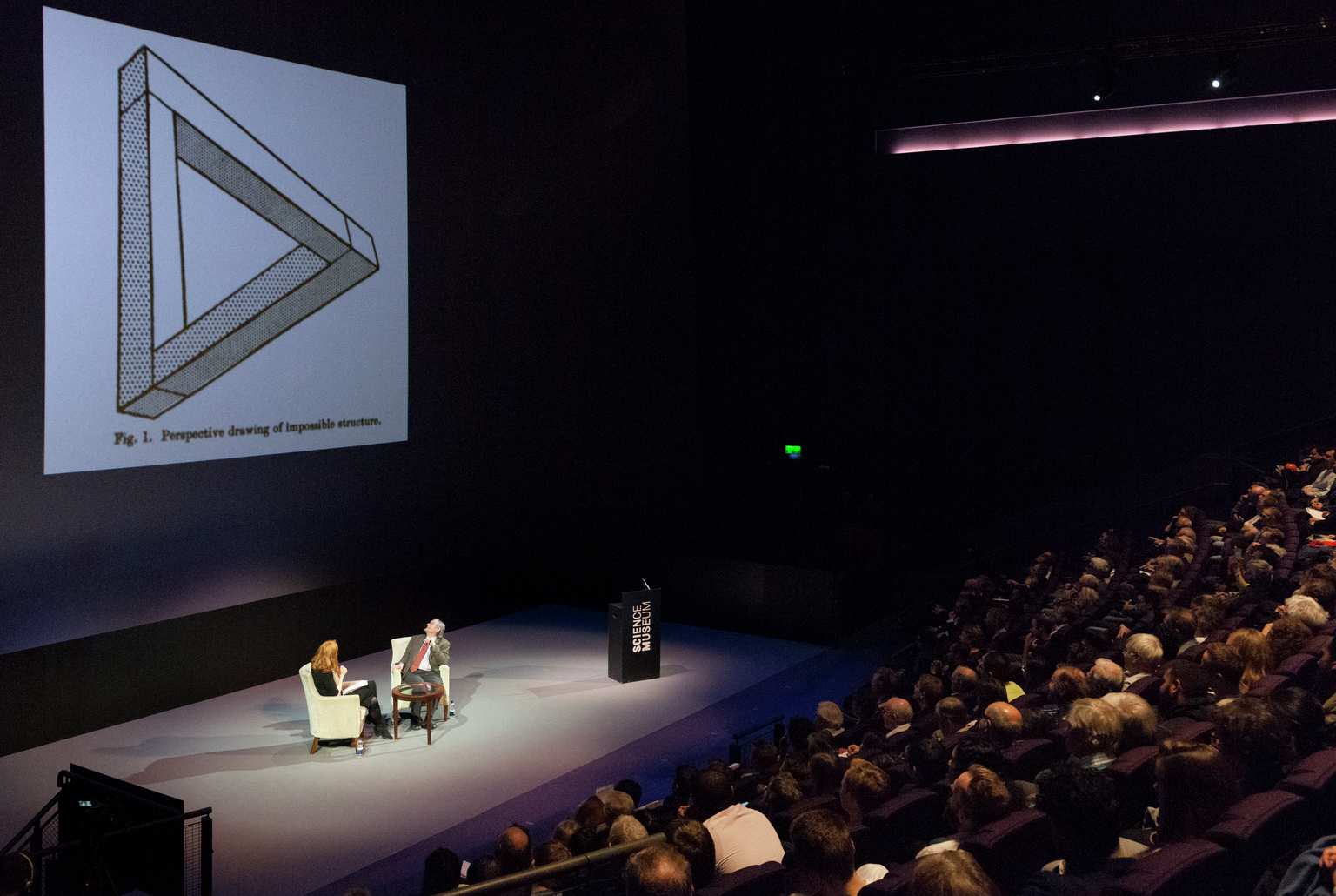
Their conversation ranged across many other themes, from Sir Roger’s childhood problem-solving skills being too leisurely for school (‘I was moved down a class’); to his doubts about wormholes; whether gravity really counts as a force (not really); the elegance of twistor theory, which he used to try to fuse the theories of quantum theory and relativity; along with the creative power of procrastination.
His love of geometry and art also resurfaced during the conversation in the form of his personal encounters with the Dutch graphic artist M. C. Escher.
He and Hannah Fry discussed the impossible structures of Escher along with the Penrose triangle, which Sir Roger devised with his father, the psychiatrist Lionel Penrose. The impossibility of these images make chimps feel queasy as well as humans, Sir Roger explained.
Paradoxically, however, impossible images can also be a boon for visualisation: Sir Roger showed the power of an Escher image – ‘Circle Limit 1’ – to represent infinity using hyperbolic geometry.
After the event, a reception was held in Mathematics: The Winton Gallery, designed by Dame Zaha Hadid. Hannah Fry remarked that Sir Roger is ‘one of the most fascinating, charming, impressive and mischievous people I’ve ever met’.